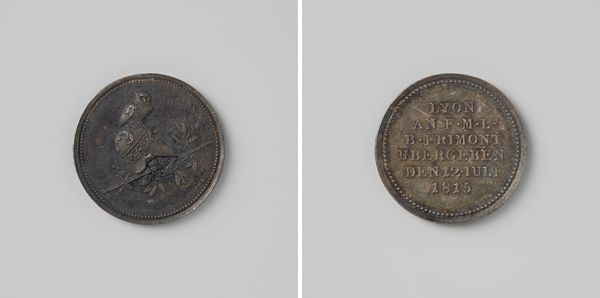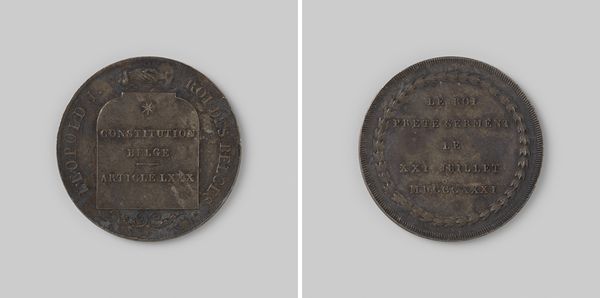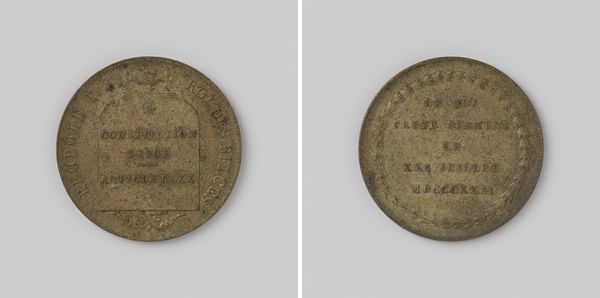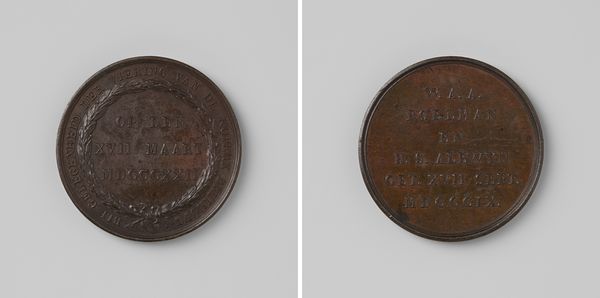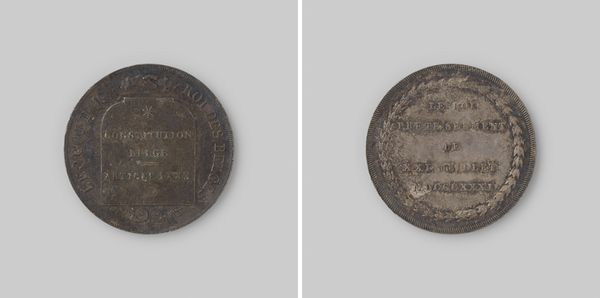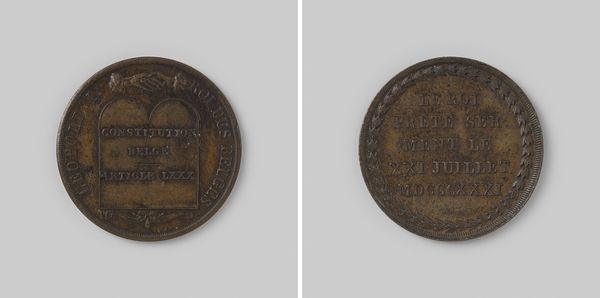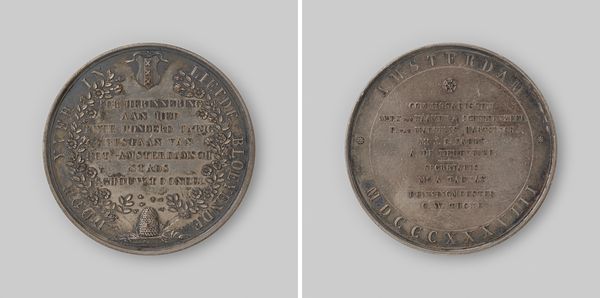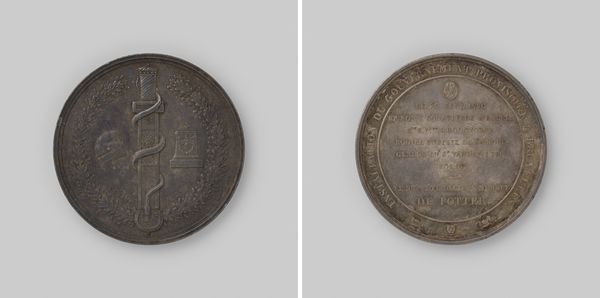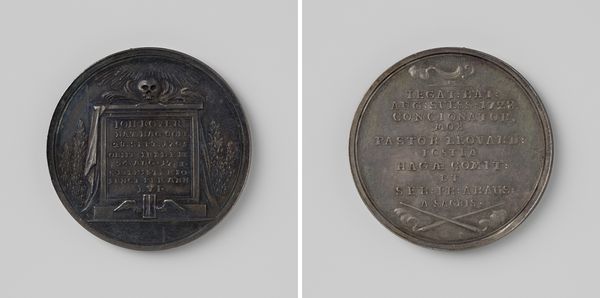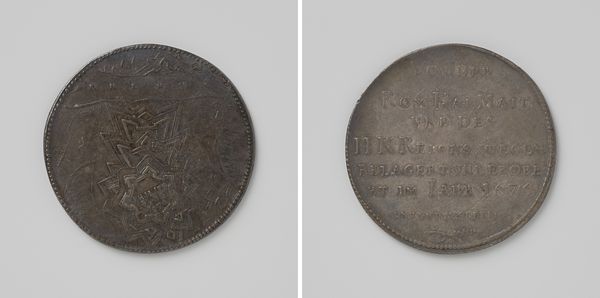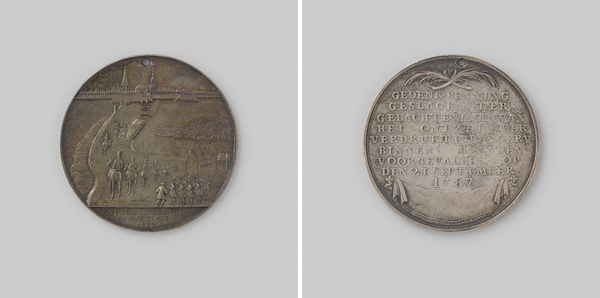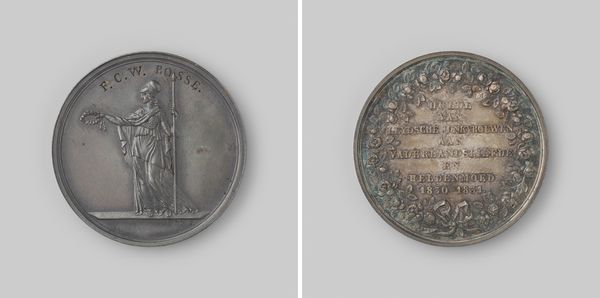
metal, relief
#
medal
#
neoclacissism
#
metal
#
relief
Dimensions: diameter 1.8 cm, weight 3.63 gr
Copyright: Rijks Museum: Open Domain
Editor: Here we have "Eerste verjaardag van de Belgische revolutie," or "First Anniversary of the Belgian Revolution," a metal relief medal from 1831, made by M. Borrel. The metallic sheen gives it a weighty, official feel. What stands out to you? Curator: It’s the production of this object that draws my attention. This medal, though seemingly small, speaks volumes about the societal values being cemented through its materiality and mass production. Medals like this weren't just symbols; they were manufactured objects intended for wide distribution. Editor: So, it’s about making the revolution tangible? Curator: Exactly. Metal itself is extracted from the earth, smelted, molded, and stamped—a process demanding labor and resources. In distributing this medal, think about what social class had access to it? How does the choice of metal enhance or diminish the message it conveys? Consider the interplay between artistry, industry, and revolutionary zeal in producing and circulating it. Editor: That’s a perspective I hadn’t considered. It really does change my understanding, from viewing it as a simple commemorative object, to understanding it as part of an industry creating collective memory. Curator: Precisely! Now consider how it fits into other forms of production during the same period. How does its value compare to, say, printed propaganda? Editor: It's interesting to consider how different media were employed for similar propagandistic purposes. Thank you, this has shifted how I approach such objects! Curator: My pleasure. Examining the physical production unveils much about the social forces at play.
Comments
No comments
Be the first to comment and join the conversation on the ultimate creative platform.
